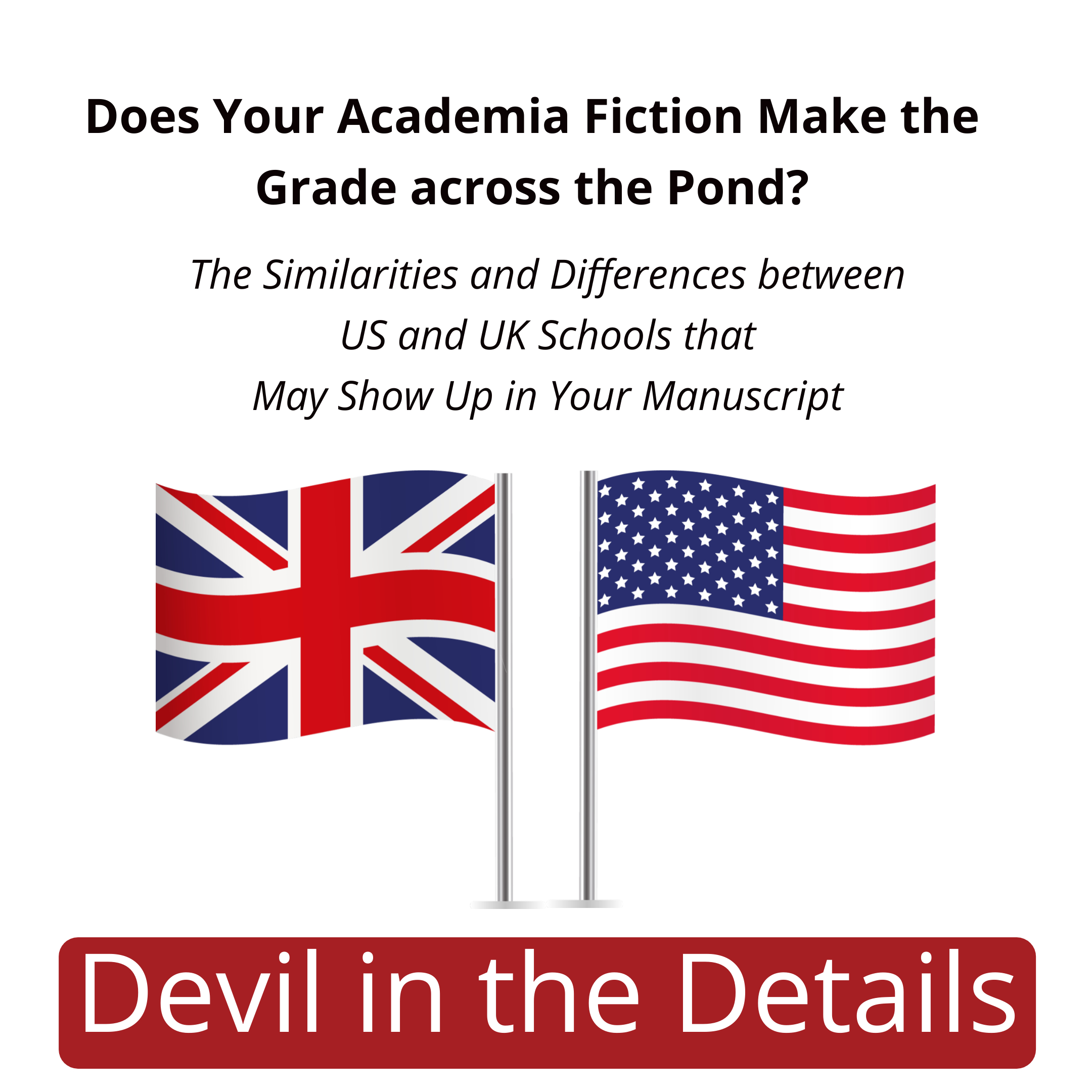The Similarities and Differences between US and UK Schools that May Show Up in Your Manuscript
School is back in session, and for authors who write YA in academic settings, inspiration may be at the bus stop right outside your door. But if your story has dark academia tropes, light academia vibes, or a boarding school setting, you may need to brush up on the details of the student experience, especially if you are an American author writing about British characters. Here are a few ways the school systems differ, so you can meet reader expectations whether you write for fans of Harry Potter or High School Musical.
Types of Schools
In the United States, most students attend public schools, which are funded by the government and free to attend. Students with means may attend private schools at varying levels of tuition. These schools are often run by a Catholic diocese but may also be founded by corporations or individuals and are sometimes affiliated with the military or a university. They are not subject to the same government mandates and standardized testing that public schools are. Magnet and charter schools have similar freedoms to private schools and are generally free to attend, but they may require testing for admittance.
The distinctions between British systems can be confusing for Americans. In England, the free, government-funded schools most students attend are referred to as “state schools.” Ironically, fee-based schools are called “public” or “independent.” Harrow and Eton, the school Prince William attended, are elite public schools.
Grade Levels
American students typically begin formal schooling in kindergarten at age five, though they may attend preschool and other preparatory programs at three or four years old. After kindergarten, students progress from first through twelfth grade before graduation. Most schools are separated into elementary (kindergarten through grade five), middle (grades six through eight), and high (grades nine through twelve) schools, though in some areas, middle grades are rolled into either the elementary or high school. High school years are also referred to as freshman, sophomore, junior, and senior years, similar to at American college and university.
In England, students usually attend nursery school before their formal education begins with year 1 at age five. The last year of nursery school is referred to as reception. Years continue through year 13, when students graduate. Years 7 through 11, equivalent to American sixth to tenth grades, are called secondary school, which may surprise Americans, as that is the term used for American middle and high school years. British schools call the last two years “sixth form,” or “college.” These are the years Americans refer to as junior and senior year, or eleventh and twelfth grades.
Post-graduate schools in the UK are referred to exclusively as “university,” or “uni.” Americans may use the terms “college” and “university” interchangeably, but technically, American colleges are schools that focus on undergraduate programs (two- or four-year degrees). American universities usually offer a wider range of programs, including graduate and PhD levels, and may be composed of several associated colleges.
Student Experience
Beyond the overall structure of the school system in each country, students may encounter distinct school environments and cultures in the US and UK.
In the United States,
- at most free public schools, students do not wear uniforms.
- many students, especially in suburban or rural areas, ride a district school bus to and from school every day for free.
- students may form cliques based on common interests, though they are rarely as distinct as the jock, nerd, and band geek stereotypes found in media.
- schools tend to place high value on sports, like football, soccer, and basketball.
- schools typically give students ten to twelve weeks of vacation over the summer.
In England,
- students wear uniforms, usually consisting of a blazer, sweater (jumper), dress shirt, and trousers or skirts. A tie is often required for every student, regardless of gender.
- students use public transportation or their parents’ vehicles to get to school.
- students do not have the same stereotypes as in the US—partly because of their uniforms—but students tend to gravitate toward friends with common interests.
- schools do not have cheerleaders or marching bands. Rugby, cricket, and netball are popular sports. In general, school sports in the UK have lower stakes than they do in America, where scholarships are on the line.
- schools only get six weeks off for summer, but they have longer breaks during the year.
Resources
To learn more about the differences between American and UK educational experiences, check out these personal accounts and one parent resource.
Teacher Tom of Eat Sleep Dream English discussed the differences between English and American schools in more detail with Jess Dante of Love and London on his YouTube channel.
Sunny in London has both a blog and a YouTube video that delve into the differences between US and UK schools from the perspective of an American mother who is married to an English man and whose children attend school in London.
American university students Noah Tang and Zack Maslanka student-taught in England in 2019. They discussed cultural differences in the classroom with Faith Ten Haken in an article for Illinois State University.
The Boarding School Review updated their comparison of UK and US educations in March 2024.
Although every school will have its own culture, and schools on both sides of the pond sometimes buck traditions, when writing about an academic setting, it’s important to get the details right. Checking your facts can help your story earn top marks—that’s high grades for Americans—and the reviews to match.
Jenn Lessmann


